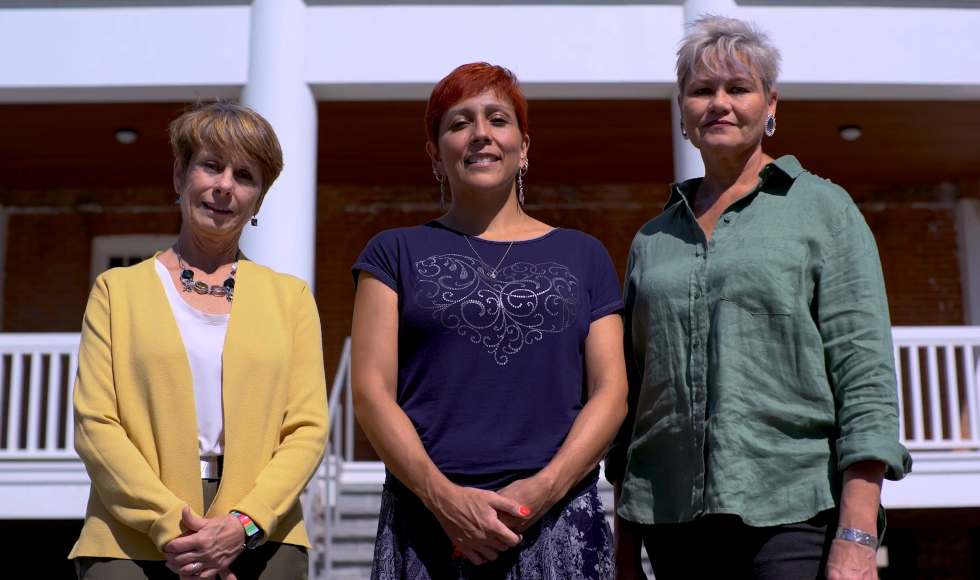Two-eyed learning clears perspectives between Indigenous and Western knowledge

From left: ITTA co-creators Joyce Zazulak, Amy Montour and Lorrie Gallant
November 25, 2020
The Indigenous Teaching Through Art (ITTA) program was created by McMaster’s Department of Family Medicine, in collaboration with local Indigenous colleagues, to fill a knowledge gap about the history of Indigenous people in Canada.
It is based on peace, friendship and respect which are the values of the Two Row Wampum agreement between the Haudenosaunee people and white settlers which set the stage for an equal and collaborative relationship to be honoured by all those who inhabit Turtle Island.
“The hope is that clinicians and staff equipped with this new knowledge and different way of knowing would be able to provide culturally appropriate care by being aware of and addressing the root causes of inequity,” said Amy Montour, an Indigenous physician and assistant professor with the Department of Family Medicine and one of three founders of the program.
The ITTA program was co-created by Indigenous and non-Indigenous members of the department and a local Indigenous artist. Besides Montour, the team includes Joyce Zazulak, a family physician and professor and Lorrie Gallant, an Indigenous artist and assistant clinical professor.
The three spent about a year developing the program, drawing upon each other’s strengths and shared connections to relate and learn from each other.
The ITTA program day begins at the David Braley Health Sciences Centre where participants travel together on a school bus to the Woodland Cultural Centre and the former Mohawk Institute Residential School in Brantford, a mode of travel like the children who lived there would have experienced.
The Mohawk Institute Residential School was a residential school for Indigenous children from 1828 to 1970, with a history of child abuse and maltreatment.
“To hear a story about Indigenous people is one thing. To come and stand on the ground where those children came to school, where those children cried and were hungry and lonely makes an impact. So, I think that’s part of the experience. You have to be in the space or you don’t understand,” said Gallant.
Throughout the day the participants engage in art and storytelling. They hear stories from residential school survivors and they learn and share with each other.
“Our first and foremost goal was to bring together two ways of knowing,” said Montour.
“Being trained as a Western physician, I am very proud of my Western training and the knowledge that I have. But my ultimate goal is to have people see through two eyes because there is so much knowledge and beauty and worth in the Indigenous way of knowing that we’re missing out as Canadians.”
The project team was awarded funding from the Department of Family Medicine’s pilot project program to evaluate the impact of ITTA. Participants complete a questionnaire immediately following the session and are invited to participate in a focus group or interview four to six months later.
“I think the evaluation is very important to this program,” said Zazulak. “There have been many Indigenous cultural safety programs delivered across Canada, but not very many of them have taken the time to evaluate the impact of the program.
“We’ve seen from the preliminary results that people are talking a lot about how this has impacted them in a very major and significant way.”
Gallant added, “The goal was to bring people to a place they could reverse their gaze for a moment. To be silent and to listen.
“The trip to the former residential school allows a space to witness and respect each human story, and to discover that it is from a place of compassion and empathy we find a way to reconcile with what has happened. It may have been uncomfortable for some but not because of triggers of the past but the challenge of going forward into the unknown. Our aim was to inspire each individual to find a way to respond and to go forward bringing others along.”


